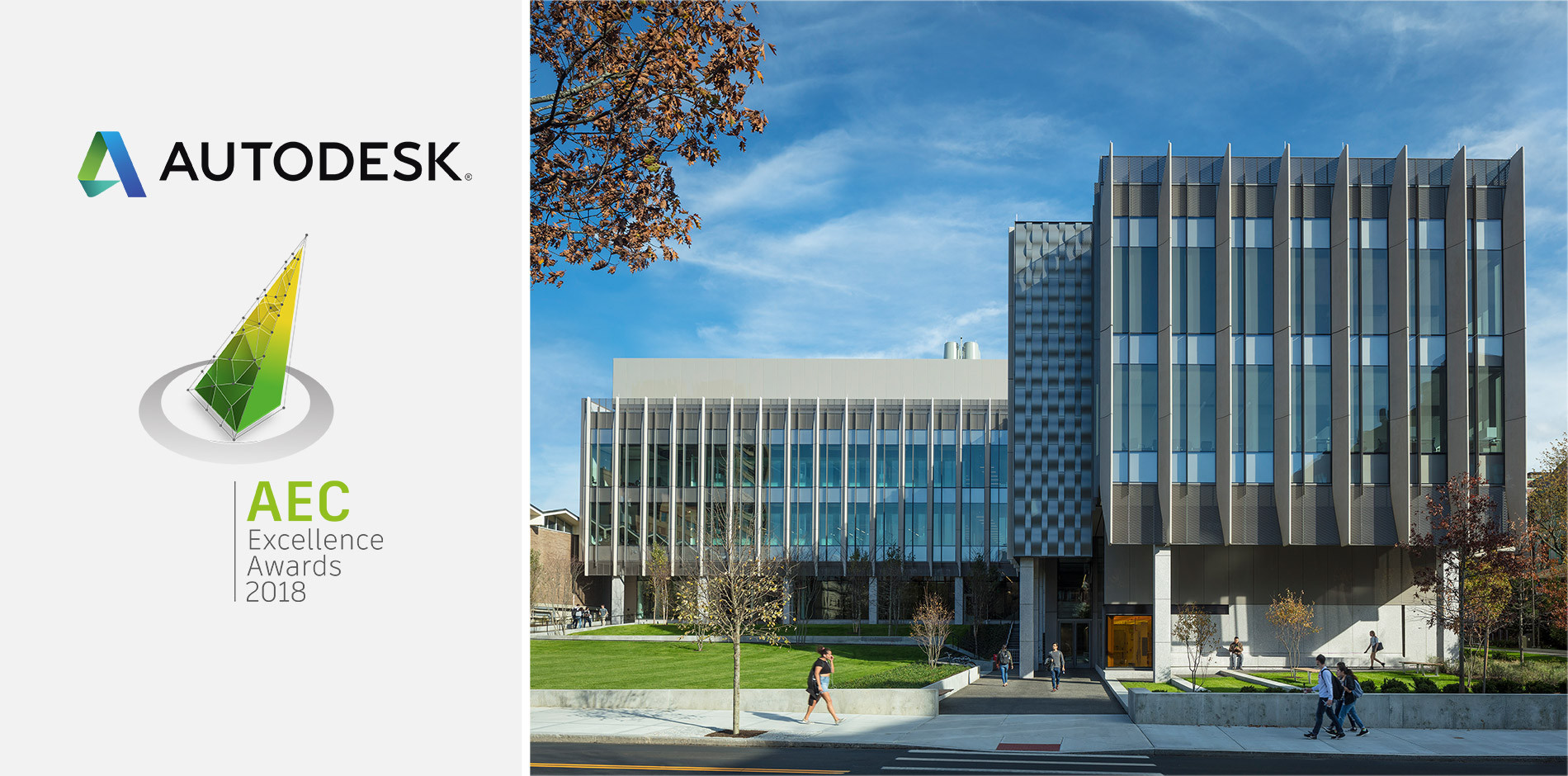This year’s Autodesk AEC Excellence Awards showcased global projects that are embracing technology to reimagine the processes of design and construction—and Brown University’s Engineering Research Center is no exception. Shawmut, along with partners KieranTimberlake and BuroHappold Engineering, completed the $88 million project utilizing a highly collaborative integrated project delivery model to streamline design, planning, and construction and deliver an on-time, on-budget project.
Excerpt from Autodesk
KieranTimberlake and BuroHappold Engineering use Autodesk® BIM 360® to streamline design, planning, and construction across Integrated Project Team
To give students the hands-on, innovative experience they need to succeed in the 21st century, Brown University commissioned a new Engineering Research Center in 2014. Completed in 2017, the 80,000-square-foot building features labs, cleanrooms, an imaging suite, and flexible shared workspaces. The project, led by KieranTimberlake architects, BuroHappold Engineering, and Shawmut Design and Construction, was one of the first institutional labs in the country delivered using the integrated project delivery (IPD) model, in which the client, architect, engineers, and contractor are all responsible for project development, stakeholder engagement, and project management aimed at an on-time, on-budget project.
Several factors made the project especially challenging. With key designers and consultants dispersed across the United States—from Seattle and San Diego to Philadelphia, New York, Boston, and Providence—effective, efficient collaboration was key. In addition, the IPD team employed target value design (TVD) principles to manage the project to a fixed budget while delivering a building that meets higher-than-usual standards. Finally, because systems for hazardous exhaust and specialty gas require special piping systems, the building needed denser-than-usual ceiling cavities. This necessitated constant coordination between designers and trade partners to avoid clashes and ensure that systems routing met the project’s high design and performance aspirations.
Using connected BIM to drive integrated project delivery
From the earliest stages of the Engineering Research Center project, the project team took a cloud-enabled, connected BIM (Building Information Modeling) approach to drive close collaboration between architects, engineers, the construction manager, trade partners, and Brown University faculty members. Faculty and design team leaders knew they wanted to be able to confidently use the intelligent model during regularly convened dual committee meetings—one focused on design and planning and another on lab development. By using connected BIM as the framework for delivering the project, the project team members had a way to achieve their collaboration goals and create a single source of truth for design and construction information. Project management and collaboration were streamlined, all stakeholders remained on the same page, there were no surprise issues, and the project met the client’s requirements.
This approach was enabled by Autodesk® BIM 360® collaboration and project management software. It allowed the design team to share model updates across disciplines in real time, enabling extensive iteration, improved coordination, and immediate clash reconciliation—from design and planning through construction and assembly. BIM 360 also offered real-time cost tracking and reporting, empowering stakeholders to make design decisions based on project budget while helping optimize construction sequencing.
During construction, stakeholders in the field used BIM 360 to access the intelligent model via mobile devices—streamlining construction management, simplifying the identification of emerging issues, and filtering critical issues by location, stakeholder responsibility, and scheduling impact.
Learn more about the Brown University Engineering Research Center project here.
